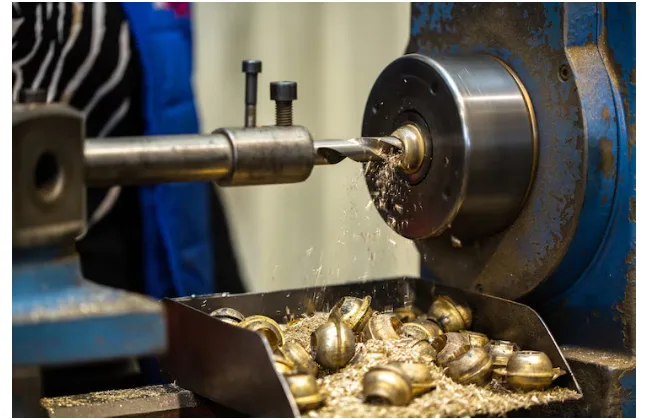Custom Alloying of Tungsten Carbide for Specific Applications
Tungsten carbide isn’t a single material. It’s a family of composites where the carbide particles, binder metal, grain size, and additional alloying elements get adjusted based on what the final product needs to survive. A drill bit cutting through shale 10,000 feet underground faces different stresses than a surgical burr shaping bone or a seal ring managing abrasive slurries in a chemical plant.
Most engineers know tungsten carbide for its hardness, but hardness alone doesn’t solve every wear problem. The material needs to handle impact, resist corrosion, maintain an edge, or flex slightly without fracturing depending on the application. That’s where custom alloying comes in. A tungsten carbide manufacturing company can’t hand the same grade to a mining operation and an aerospace machine shop and expect optimal performance from both.
The Base Material and Why It Gets Modified
Standard tungsten carbide uses cobalt as the binder metal, typically ranging from 6% to 15% by weight. The cobalt holds the tungsten carbide grains together and gives the material some toughness. Higher cobalt content means more impact resistance but lower hardness. Lower cobalt means a harder, more wear-resistant material that’s more brittle.
Grain size matters just as much. Fine grains (sub-micron) produce a harder, smoother surface but reduce toughness. Coarse grains (several microns) improve fracture resistance but wear faster under abrasive conditions. The trick is matching grain size and binder content to the application’s dominant failure mode.
But cobalt and grain size are just the starting point. Different industries need materials that resist specific types of degradation. Mining tools face impact and abrasion. Oil and gas components deal with erosion, corrosion, and high temperatures. Medical instruments require biocompatibility and precision edges. Each scenario requires different alloying strategies.
Prioritizing Impact and Abrasion Resistance
Mining tools operate in some of the harshest conditions. Rock drilling bits, crusher wear parts, and cutting picks encounter massive impact forces combined with continuous abrasion from quartz, feldspar, and other hard minerals. The material needs to absorb shock without shattering while resisting wear from constant grinding contact.
For these applications, manufacturers typically use medium to coarse grain tungsten carbide with cobalt content in the 10% to 15% range. The higher binder percentage provides the toughness needed to handle impact loading during drilling or crushing operations. Some formulations add small amounts of titanium carbide or tantalum carbide to improve hot hardness when cutting generates significant heat.
Drill bits for hard rock mining often use a grade around WC-11Co with grain sizes between 1.5 and 3 microns. This composition balances wear resistance against the rock with enough toughness to prevent the cutting edge from chipping when it hits a particularly hard seam or inclusion. The cobalt binder deforms slightly under impact, distributing stress and preventing crack propagation through the carbide structure.
Crusher wear plates and grinding mill liners face slightly different conditions. These components experience continuous sliding abrasion with periodic impacts. Manufacturers sometimes reduce cobalt content to 8% or 9% and use a slightly finer grain structure to maximize abrasion resistance, accepting a small reduction in impact toughness since the loading is less severe than in drilling applications.
Handling Corrosion and Erosion
Downhole drilling tools and flow control components in oil and gas operations face a different set of challenges. Corrosive fluids, high pressures, elevated temperatures, and erosive particles create an environment where standard tungsten carbide grades fail quickly. Salt water, hydrogen sulfide, carbon dioxide, and acids attack the cobalt binder, while sand and proppants erode surfaces.
A tungsten carbide manufacturing company addressing these conditions often substitutes nickel or nickel-chromium alloys for some or all of the cobalt binder. Nickel provides better corrosion resistance in acidic environments, though it slightly reduces toughness compared to cobalt. Some grades use a mixed binder system, combining cobalt and nickel to balance corrosion resistance with mechanical properties.
For drill stabilizer blades and mud motor components, manufacturers add chromium carbide to the tungsten carbide matrix. Chromium carbide improves corrosion resistance and helps the material maintain hardness at elevated temperatures. A typical composition might be WC-10Co-3Cr3C2, where the chromium carbide forms a protective layer that slows binder corrosion.
Seal rings and valve seats in flow control equipment need to resist both erosion and galling. These parts use very fine grain tungsten carbide with 6% to 8% cobalt or nickel binder. The fine grain structure provides a smooth, dense surface that resists erosive particle impact and minimizes material transfer during metal-to-metal contact under high pressure.
Some manufacturers also produce binderless tungsten carbide grades for extreme corrosion resistance. These materials use sintering techniques that eliminate the binder phase entirely, creating a nearly pure tungsten carbide structure. They’re extremely hard and corrosion resistant but also brittle, limiting their use to applications with minimal impact loading.
Medical and Surgical Tooling
Medical cutting instruments need razor-sharp edges that stay sharp through hundreds or thousands of uses. Surgical burrs, dental drills, and orthopedic cutting guides must maintain precise geometries while meeting stringent biocompatibility requirements. The material can’t shed particles into tissue or provoke an immune response.
Medical grade tungsten carbide uses ultra-fine grain structures, often below 0.5 microns. The extremely small grains allow manufacturers to grind cutting edges with radii measured in single-digit microns. These edges stay sharp longer because the fine grain structure resists microchipping and abrasive wear from bone or tooth material.
Cobalt content in medical grades typically runs between 6% and 10%. Lower percentages provide the hardness needed for edge retention. Higher percentages appear in instruments that experience more mechanical stress, like orthopedic reamers or high-speed dental handpiece inserts.
Biocompatibility presents a unique challenge. Cobalt can cause adverse reactions in some patients, particularly with prolonged exposure. Some medical device manufacturers specify nickel binders instead, though nickel itself can be problematic for patients with nickel sensitivity. More recently, some tungsten carbide manufacturing companies have developed grades using iron or stainless steel binders for improved biocompatibility, though these materials sacrifice some performance compared to cobalt-bound grades.
Surface finish matters enormously in medical applications. Rough surfaces can trap bacteria or tissue, creating infection risks. Medical tungsten carbide gets ground and polished to mirror finishes, with surface roughness values below 0.1 microns Ra. The fine grain structure makes achieving these finishes possible without pulling out grains during polishing.
The Manufacturing Process and Quality Control
Custom alloying starts with powder metallurgy. Manufacturers blend tungsten carbide powders of specific grain sizes with cobalt or other binder metals in precise ratios. Any additional carbides get mixed in at this stage. The powder blend goes through milling to ensure uniform distribution, then gets pressed into the desired shape or near-net shape.
Sintering happens in vacuum or controlled atmosphere furnaces at temperatures between 1,300°C and 1,500°C. The binder metal melts and flows around the carbide grains, creating the final bonded structure. Temperature, time, and atmosphere all affect the final properties. Too much carbon in the atmosphere can form free graphite, weakening the material. Too little carbon can form brittle eta phase compounds.
Quality control includes measuring grain size distribution, binder content, porosity, and mechanical properties like hardness and transverse rupture strength. For critical applications, manufacturers perform magnetic saturation tests to detect unwanted phases and use scanning electron microscopy to examine microstructure.
Some industries require additional testing specific to their needs. Medical device manufacturers need cytotoxicity and biocompatibility testing. Oil and gas suppliers test corrosion resistance in simulated downhole fluids. Mining companies want documented impact resistance data.
Selecting the Right Grade
Choosing a tungsten carbide grade means understanding the failure mode you’re trying to prevent. Will the part fail from abrasive wear, impact fracture, corrosion, or thermal degradation? What’s the dominant stress type during operation? How important is edge sharpness versus toughness?
Working with an experienced tungsten carbide manufacturing company helps navigate these decisions. They can recommend starting grades based on similar applications, test samples under actual operating conditions, and adjust the composition if initial results don’t meet requirements. Sometimes the optimal grade isn’t in a standard catalog. Custom compositions get developed for specific applications when nothing off the shelf performs adequately.
The material cost difference between grades can be significant, but so can the cost of premature failure or frequent replacement. A slightly more expensive grade that lasts twice as long usually pays for itself quickly when you factor in downtime, labor, and lost production.
Tungsten carbide’s versatility comes from the ability to adjust its composition for specific challenges. Understanding what each alloying element and structural parameter contributes lets manufacturers create materials that perform reliably in environments ranging from underground mines to operating rooms.




